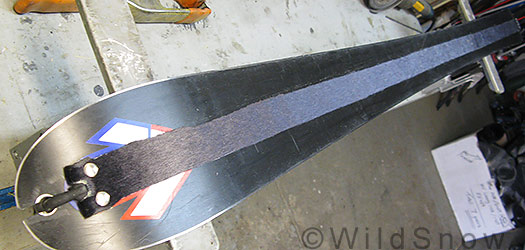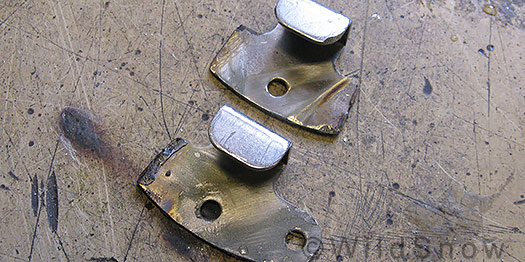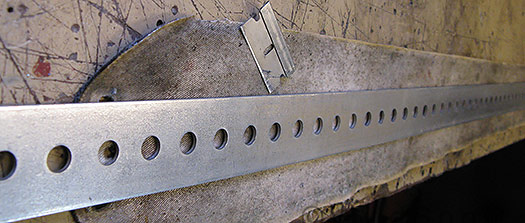Sometimes lipo ends up being overkill. Perhaps all the time. Succumbing to that same syndrome, I’ve been experimenting with just how skinny I can make a pair of skins and still actually move forward on them without falling on my face. This pair of 2-inch wide jobbies worked okay on moderate terrain, used with a ski of about 95 mm underfoot. You’d definitely want to go wider for a bigger plank. Purpose: Long approach marches on super low angled terrain.

I used an old pair of Dynafit mohairs I had lying around. They were completely bald on the edges and just about ready for the dumpster. Glue was gone as well, so I renewed with a few coats of Gold Label.

The Dynafit tail clip was narrowed (above) and re-attached with rivets. Tip fixation is Dynafit as well, could be anything, even duct tape. The idea is easier backcountry skiing during long low-angled slogs.

Cutting climbing skins to be skinny. I used a stick of 'holy' steel from the hardware store as a template. I tried cutting without a template; fail.
If you’ve got a pair of skins with worn out edges, cut ’em down and do some experiments with backcountry skiing. Another option to increase glide is to cut a pair of skins at normal width, but significantly shorter at the tail. Still another option is to use “kicker” skins that mount under the boot area of the ski. I’ve found the latter to be more problematic than useful. Your take WildSnowers?
WildSnow.com publisher emeritus and founder Lou (Louis Dawson) has a 50+ years career in climbing, backcountry skiing and ski mountaineering. He was the first person in history to ski down all 54 Colorado 14,000-foot peaks, has authored numerous books about about backcountry skiing, and has skied from the summit of Denali in Alaska, North America’s highest mountain.
